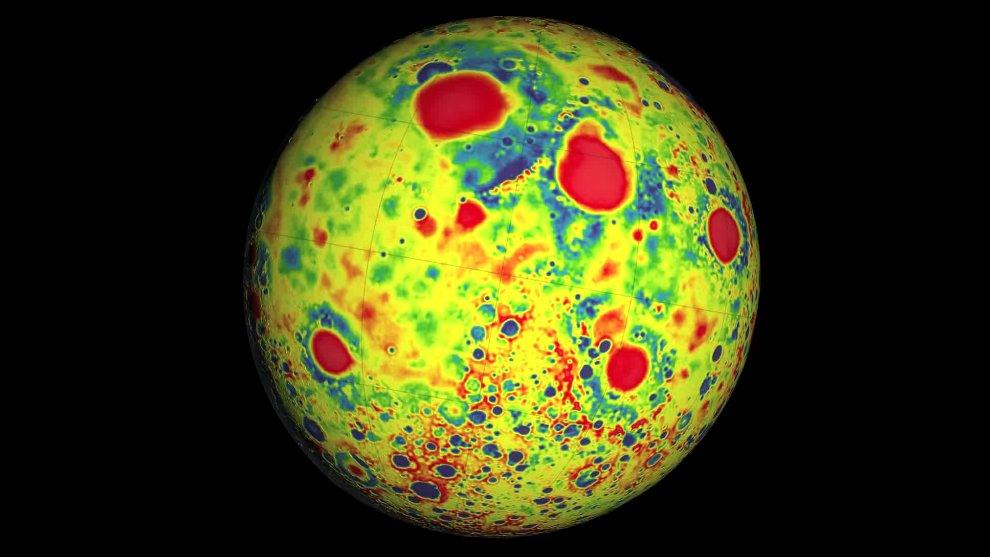Moon's hidden valley system revealed
- Published
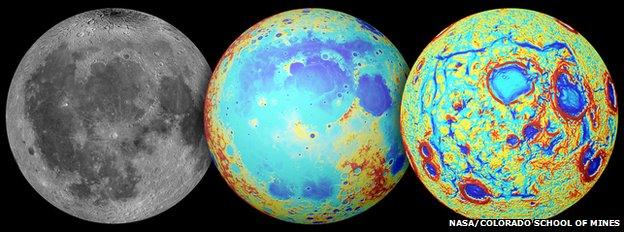
The Moon as we see it (L), in terms of height variation (C), and from surface gravity variations (R)
Scientists have identified a huge rectangular feature on the Moon that is buried just below the surface.
The 2,500km-wide structure is believed to be the remains of old rift valleys that later became filled with lava.
Centred on the Moon's Procellarum region, the feature is really only evident in gravity maps acquired by Nasa's Grail mission in 2012.
But knowing now of its existence, it is possible to trace the giant rectangle's subtle outline even in ordinary photos.
Mare Frigoris, for example, a long-recognised dark stripe on the lunar surface, is evidently an edge to the ancient rift system.
"It's really amazing how big this feature is," says Prof Jeffery Andrews-Hanna.
"It covers about 17% of the surface of the Moon. And if you think about that in terms relative to the size of the Earth, it covers an area equivalent to North America, Europe and Asia combined," the Colorado School of Mines scientist told BBC News.
"When we first saw it in the Grail data, we were struck by how big it was, how clear it was, but also by how unexpected it was.
"No-one ever thought you'd see a square or a rectangle on this scale on any planet."
The study is reported in Nature magazine, external.
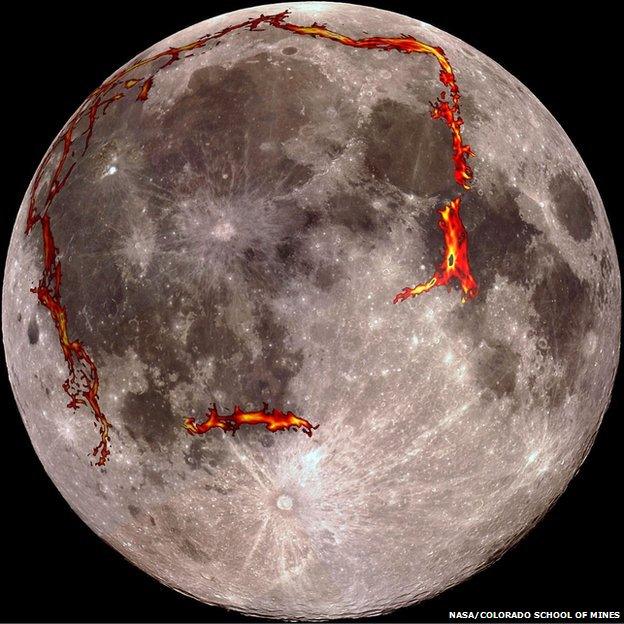
The full Moon as seen from the Earth, with the Procellarum border structure superimposed in red
So how was this extraordinary feature produced?
Andrews-Hanna and colleagues note that the Procellarum region contains a lot of naturally occurring radioactive elements, such as uranium, thorium and potassium.
On the early Moon, these would have heated the crust, which, when it cooled would have contracted.
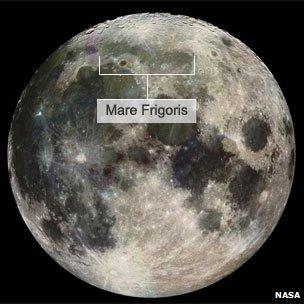
Mare Frigoris is evidently an edge to the ancient rift valley system
This shrinking, they propose, would have ripped the surface, opening deep valleys. The geometry is the giveaway.
On Earth, cooling and contraction will preferentially produce hexagons containing 120-degree angles.
The famous Giant's Causeway in Northern Ireland is a classic example on the small scale, but even in bigger settings, such as in East Africa's rift valleys, geological lines tend to intersect in this way.
Procellarum's giant rectangle does the same, too - because the entire feature is draped over a sphere. This means the angles at the corners are wider than 90 degrees.
"What we're seeing is a clever trick of spherical geometry. For structures on this scale, a polygon with 120-degree angles at the corners actually has four sides instead of six," explained Prof Andrews-Hanna.
The team cannot tell when the rifting occurred, but the dating of Moon rocks brought back by Apollo would suggest the valleys were filled by volcanic lavas about 3.5 billion years ago.
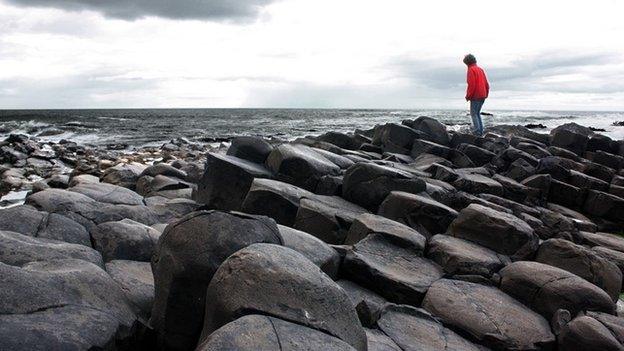
Giant's Causeway: Cooling basaltic rock naturally fractures into hexagons
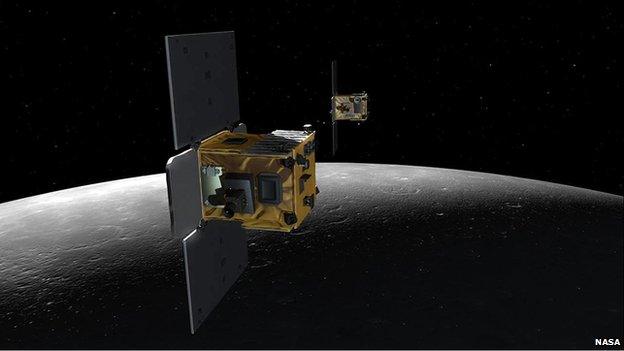
The Grail satellites sensed very subtle variations in the pull of gravity across the Moon's surface
The new study goes some way to resolving arguments over the origins of Procellarum, which looks different to other, more circular mare (dark regions) on the Moon's surface.
For these regions, big asteroid impacts were more important in sculpting their forms.
The study is also further proof of the value of the Grail mission, led from the Massachusetts Institute of Technology.
This comprised two, near-identical satellites that chased each other around the Moon over the course of a year.
They mapped changes in the pull of gravity as they flew over areas of differing mass.
Big mountains will have a different signal that is distinct to deep depressions, obviously. But the data also reveals those locations that have discrete rock types and densities.
In the case of Procellarum, the Grail pair sensed an excess of mass stemming from the presence of all the basaltic lava filling the rift valleys.
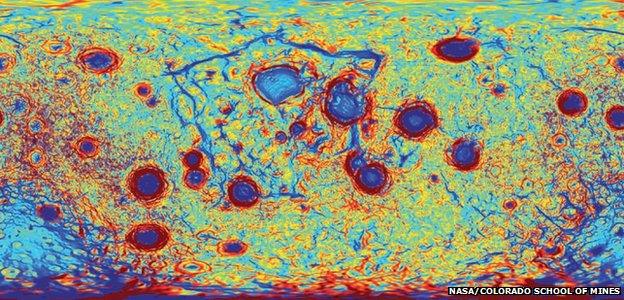
The feature stands out in this Mercator map projection of the changes in gravity
Jonathan.Amos-INTERNET@bbc.co.uk and follow me on Twitter: @BBCAmos, external
- Published17 December 2012
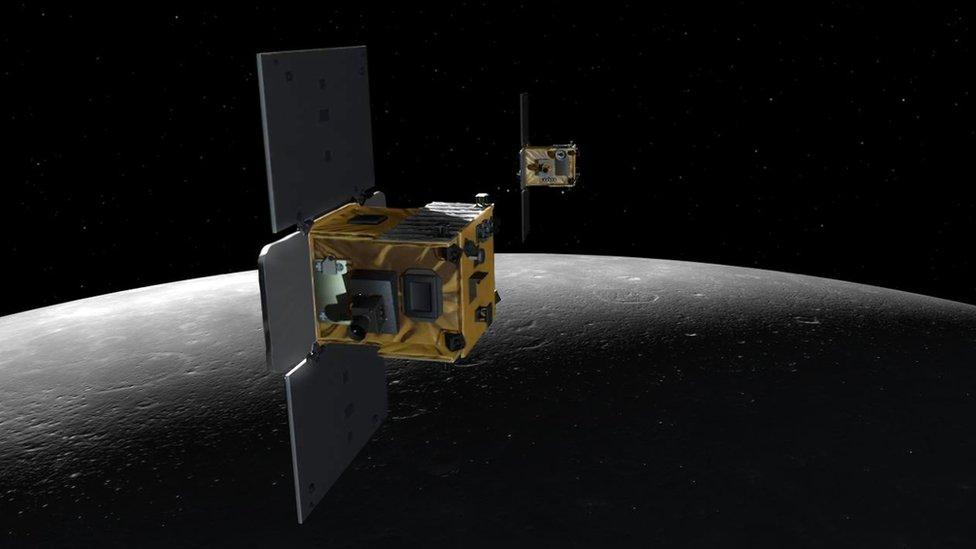
- Published5 December 2012
- Published5 December 2012
